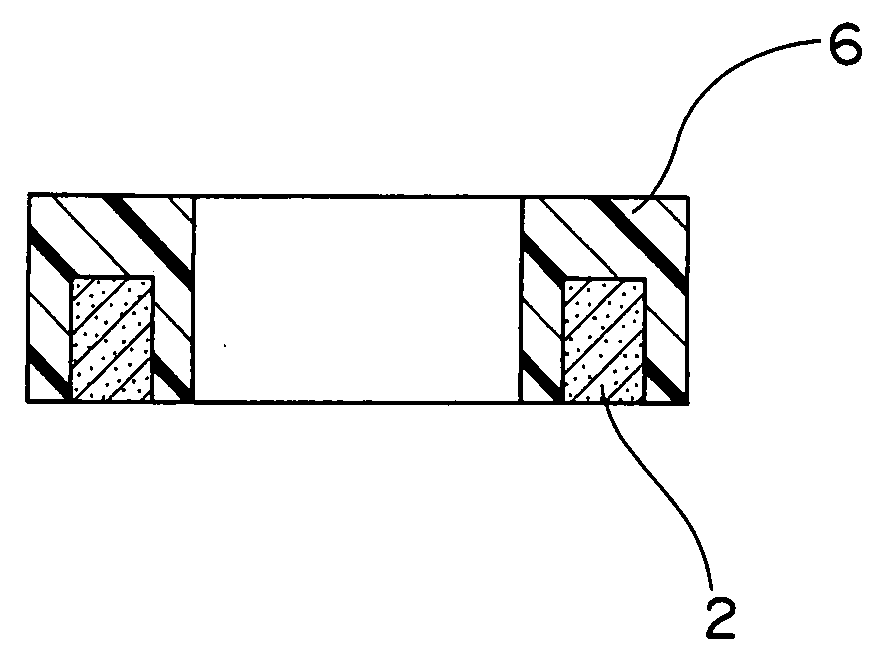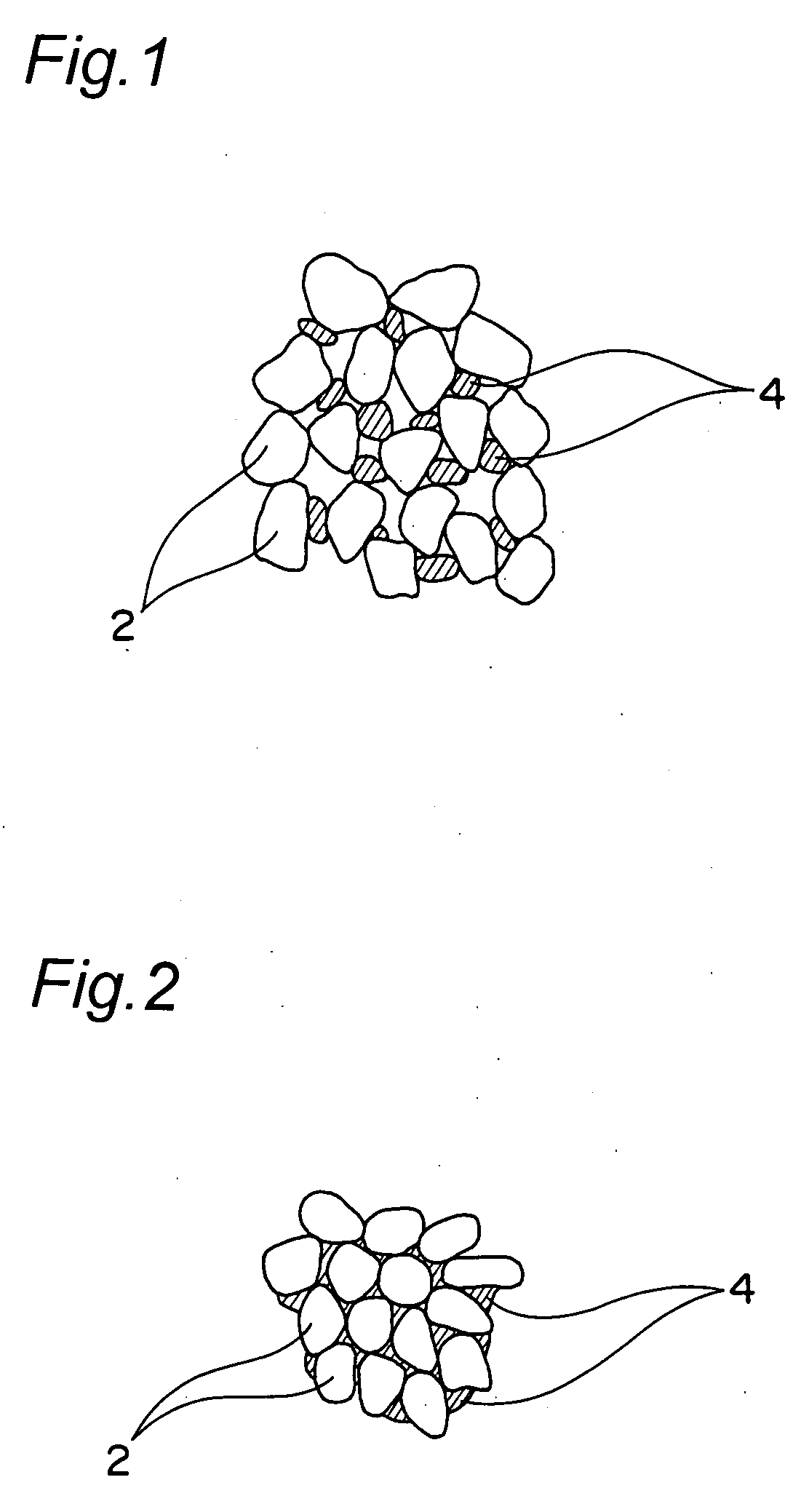Method of Making a Magnetic Core Part
a magnetic core and resin molding technology, applied in the field of resin molding magnetic core parts, can solve the problems of cracks, inferior moldability or compactability of the most commonly used material, and material characteristics that are now at a limit in terms of material characteristics, so as to reduce the size of the magnetic core part, and increase the magnetic flux density
- Summary
- Abstract
- Description
- Claims
- Application Information
AI Technical Summary
Benefits of technology
Problems solved by technology
Method used
Image
Examples
embodiment 1
[0065]FIG. 1 depicts a magnetic substance, in which powder particles have been compacted, for use in a method of making a resin-molded magnetic core part according to a first embodiment of the present invention. This magnetic substance includes a large number of powder particles 2 constituting magnetic powder and each coated with an insulating material, and a large number of binder particles 4 interposed (dispersed) between the powder particles 2.
[0066] A resin having a melting temperature lower than a predetermined injection molding temperature is used as the binder 4. The binder 4 is fused or softened by injection molding it at a predetermined temperature with a base resin containing magnetic powder coated with the insulating material. As shown in FIG. 2, the intervals between the magnetic powder particles 2 are shortened, and the compacted magnetic substance shrinks, resulting in an increase in the filling density.
[0067] Preferably, examples of the magnetic powder particles 2 i...
embodiment 2
[0089]FIGS. 7A and 7B depict a magnetic core part made by a method of making a resin-molded magnetic core part according to a second embodiment of the present invention, wherein the magnetic core part is a coil-embedded magnetic part.
[0090] As shown in FIGS. 7A and 7B, under the condition in which opposite leading portions 12 of a coil 10 are caused to extend outwardly in the same direction in parallel to each other, a soft magnetic green compact 2 is first inserted inside the coil 10, and both of them are then insert molded into a resin composition 6 with only the opposite leading portions 12 exposed. By so doing, the permeability of the resin-molded magnetic core part is partially enhanced, thereby improving the performance thereof. In particular, if the soft magnetic green compact 2 is inserted inside the coil 10, the permeability on the inner side of the coil 10 is enhanced and, hence, not only can the coil diameter be reduced, but the number of turns can be also reduced.
[0091...
embodiment 3
[0092]FIGS. 9A and 9B depict a magnetic core part made by a method of making a resin-molded magnetic core part according to a third embodiment of the present invention, particularly depicting the case where the resin-molded magnetic core part is a coil-embedded magnetic part.
[0093] In the case of the resin-molded magnetic core part as shown in FIGS. 9A and 9B, a wire made of an electrically conductive material such as, for example, Cu is first wound around a generally straight bar (not shown) to form a coil 16, which is in turn pulled out of the bar and then curved so that the axial center of the coil 16 may present a generally circular shape with opposite leading portions 18 thereof led out in the same direction in parallel to each other. Thereafter, the curved coil 16 is insert molded into a resin composition 6 with only the opposite leading portions 18 exposed. This process makes it possible to considerably simply complete a toroidal core integrated with an air-core coil, as com...
PUM
| Property | Measurement | Unit |
|---|---|---|
| temperature | aaaaa | aaaaa |
| magnetic properties | aaaaa | aaaaa |
| magnetic | aaaaa | aaaaa |
Abstract
Description
Claims
Application Information
 Login to View More
Login to View More - R&D
- Intellectual Property
- Life Sciences
- Materials
- Tech Scout
- Unparalleled Data Quality
- Higher Quality Content
- 60% Fewer Hallucinations
Browse by: Latest US Patents, China's latest patents, Technical Efficacy Thesaurus, Application Domain, Technology Topic, Popular Technical Reports.
© 2025 PatSnap. All rights reserved.Legal|Privacy policy|Modern Slavery Act Transparency Statement|Sitemap|About US| Contact US: help@patsnap.com



